More Images
Humphrey vs. Angulate?
Gastropod
Auger-Shaped - wentletraps (Epitoniidae)
Angulate Wentletrap Epitonium angulatum (Say)
Description: (1 inch) High, slender, glossy spire. Each whorl with nine to 10 strong ribs, each slightly angled on the whorl shoulder. Smooth spaces between ribs. Round aperture. Operculum. Color: Shiny white interior and exterior. Reddish brown operculum.
Habitat: Occasionally found in drift on ocean beaches.
Range: New York to Uruguay.
Notes: (See brown-band wentletrap Notes) : Also called lined wentletrap. About 24 kinds of wentletraps have been recorded in North Carolina waters. A carnivore, it forages in sand for sea anemones and tears tissue with its jaws. It secretes a substance that turns purple and may anesthetize the anemones. Females lays strings of sand-covered egg capsules. Its young are free-swimming. The precious wentletrap (up to 2 3/4 iches long) from the Pacific Ocean is one of the prettiest shells known.
Humphrey Wentletrap Epitonium humphreysii (Kiener)
Description: (3/4 inch) Small, high-spired shell. Very similar to angulate wentletrap in appearance, habitat and numbers, but eight to nine rounded ribs on each whorl thicker and not angulate at shoulder. Also, generally more slender with a thicker lip on round aperture. Smooth spaces between ribs. Operculum.
Color: White exterior and interior. Mahogany-colored operculum.
Habitat: Occasionally found in drift on ocean beaches.
Range: Massachusetts to Texas.
Notes: (See brown-band wentletrap Notes) : Also called lined wentletrap. About 24 kinds of wentletraps have been recorded in North Carolina waters. A carnivore, it forages in sand for sea anemones and tears tissue with its jaws. It secretes a substance that turns purple and may anesthetize the anemones. Females lays strings of sand-covered egg capsules. Its young are free-swimming. The precious wentletrap (up to 2 3/4 iches long) from the Pacific Ocean is one of the prettiest shells known.
Source: Seashells of North Carolina, North Carolina Sea Grant College Program

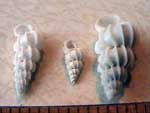
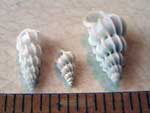
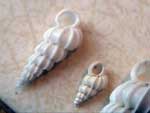
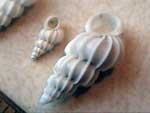
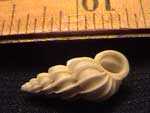


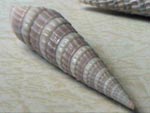

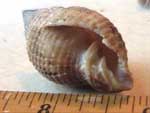





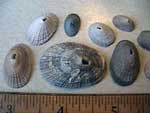

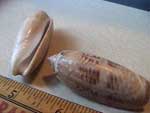
No comments:
Post a Comment